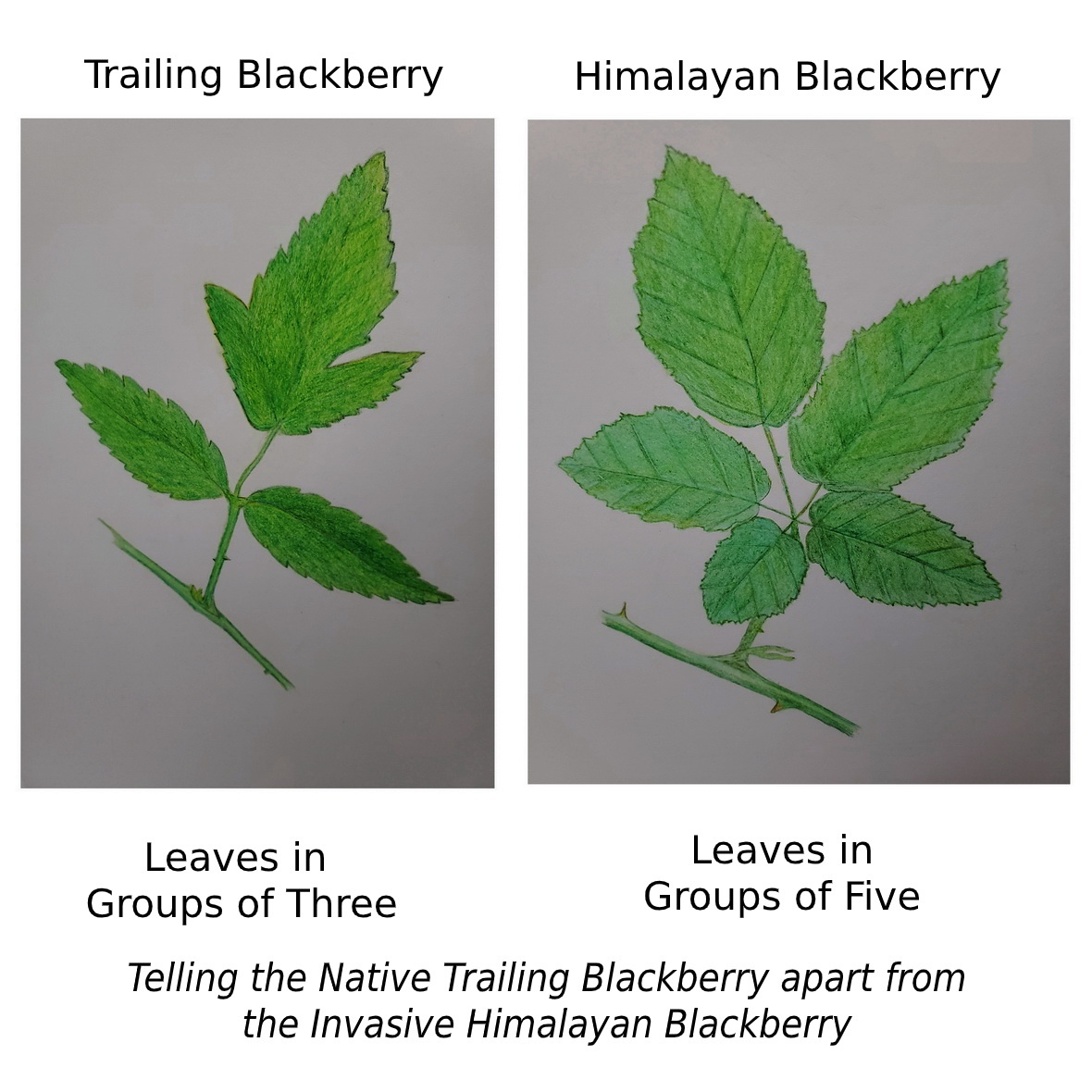Himalayan Blackberry and Its Native Look-Alikes
Working on forest restoration has given me a grudging respect for Himalayan Blackberry. In full sun it produces masses of flowers that swarm with bees. The delicious fruit feeds birds and small mammals that take refuge in its impenetrable thickets. Armed with a formidable array of nasty thorns it spreads by both seeds and runners. The runners include both lateral roots that can extend several feet underground and arching overhead runners that can extend up to 20’.
Himalayan Blackberry is not as invasive when growing as isolated plants under the shaded forest canopy, but in sunny edges it can overwhelm other plants and produce the massive patches that most of us in the Puget Sound Region are familiar with.
Native Look-Alikes
Himalayan Blackberry, when small, is easily confused with the native Trailing Blackberry. To tell them apart, I focus on the leaves. Himalayan Blackberry leaves grow from short stems that emerge alternately from the main vine stems in groups of 5. Trailing Blackberry leaves grow in the same way but in groups of 3. If I’m looking at a Blackberry vine, and I’m not sure which it is, if the leaves are in groups of 3, I assume it’s a Trailing Blackberry and leave it alone.
The native Blackcap Raspberry can also be confused with the Himalayan Blackberry. The Blackcap has a similar size and shape and also has leaves in groups of 5. However, the leaves of the Blackcap are shaped differently, and the vine stems have even more thorns than the Himalayan. The Blackcap’s vine stems are such a light green they can appear almost white. (Another common name for this plant is Whitebark Raspberry.)
The leaves of the Salmonberry can look similar to those of the Himalayan Blackberry, but the Salmonberry is a shrub with woody stems, not a vine. Note that by late November the leaves of the Salmonberry are either yellow or have already fallen, whereas those of the Himalayan Blackberry are still green. Thus, this is a good time to spot Himalayan Blackberry growing in patches of Salmonberry.
